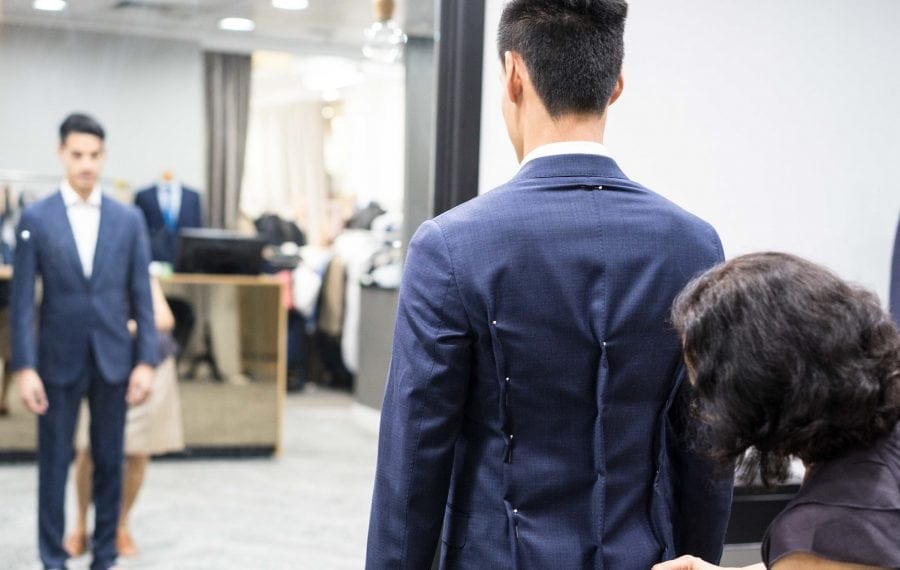Disaster Stories – Why you should choose your tailor carefully
Over the last 30 years we have been in business, we have come across hundreds of thousands of suits. Some well-tailored, some less so; some perfectly altered and some are just down right disasters.
We have found a lot of men have had horrible experiences with tailors, and have often tried numerous seamstresses before settling on the one that is right for them. Therefore we think it would be prudent to share our experience with the men of Australia, and help them save time searching, and avoid mistakes which may ruin their precious garments.
In our 4 part blog series, we will break down the behind the scenes operations of an alterations tailor. Some of the areas we will cover are how to find the right tailor to alter your garments, and why is it important; what to avoid and why alterations cost as much as it does.
In part 1 of our blog, we are sharing some of the disaster alterations from less experienced alterations places, our clients have brought in for us to fix from within the last 3 months.
1. Trousers hemmed
A customer googled cheap clothing alterations and found a local “seamstress” who offered cheap hemming. He took two pairs of brand new suit trousers to be shortened. The “Seamstress” rolled up the excess fabric into the trousers, and stitched over the top with a straight machine.
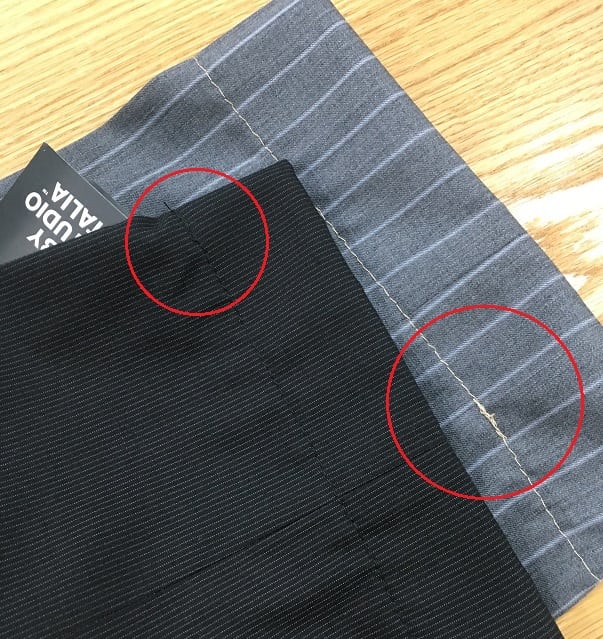
Incorrect
There is a huge bulk at the hem because there are 4 layers of rolled up fabric. The fabric is bunched up along the stitch line because the width of the rolled up fabric is too narrow to fit. The stitching is loose, uneven, in the wrong colour and extremely VISIBLE.
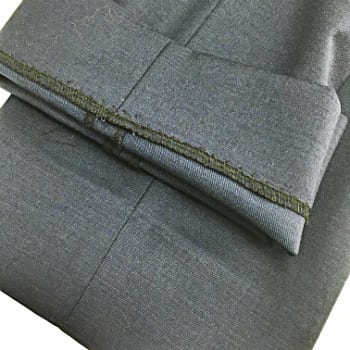
Correct
Excess fabric should be cut and overlocked, leaving only a 5cm allowance on the inside of the hem. The width of the hem should be made wider enable it to be turned without making the fabric bunch up. A blind hemmer (not a straight machine) should to be used to finish suit trousers, so that no stitching can be seen from the outside.
2. Jacket sleeves shortened
Customer bought a MJ Bale suit outside of Brisbane for his wedding, and had his sleeves shortened by a local tailor down the coast. The jacket sleeves had functioning button holes, which meant it can only be shortened up to 1.5cm from the cuff. If more than 1.5cm is required, it should have been shortened from the shoulders.
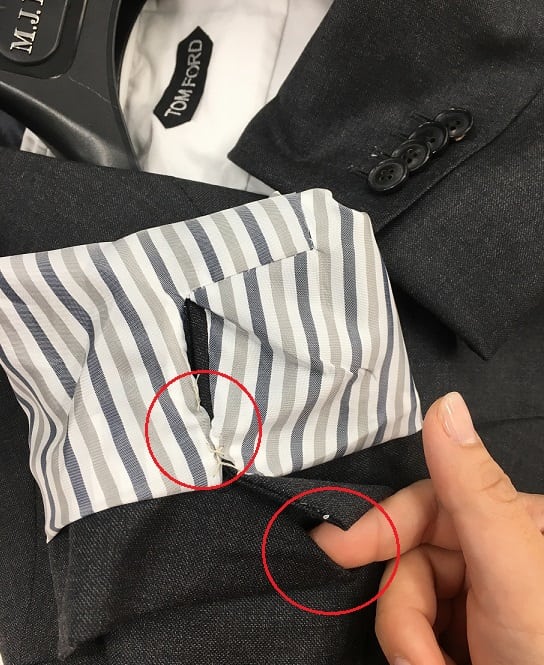
Incorrect
The local tailor folded over the cuff and roughly stitched it together in thick white cotton. The stitching is messy and uneven, the corners of the cuffs are not closed properly, and the cuffs are stitched so that the buttons cannot be used.
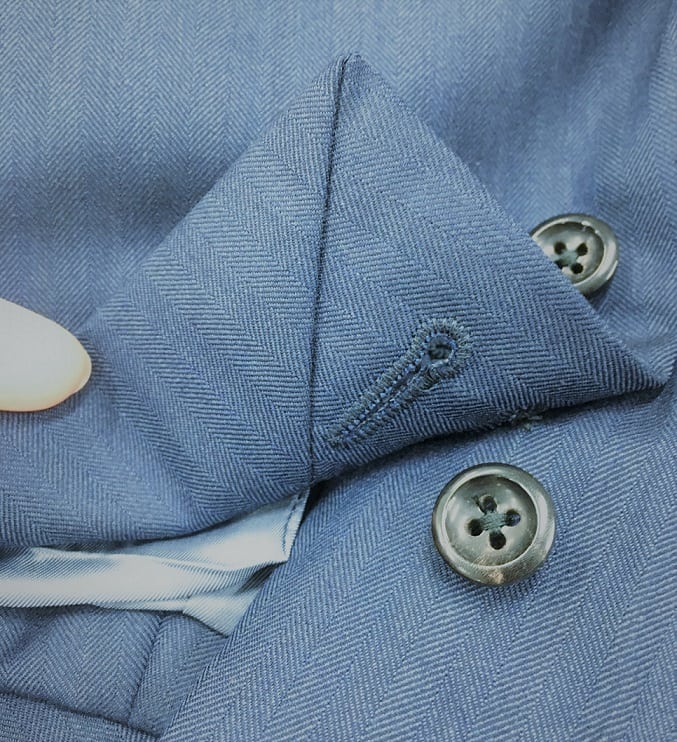
Correct
The lining should be separated from the suit fabric. The cuffs then need to be turned over neatly and corners hand stitched along the seam in correct colour thread, the stitching should not be visible. The lining is then attached to the fabric again by a combination of machine and hand stitch. Alternatively, the sleeves should be shortened from the top of the shoulder by an experienced tailor.
3. Jacket tapering
A jacket was taken in on the waist along the front seams much too sharply, not considering the overall aesthetics of the jacket, thereby creating a bubble under the armhole. The jacket also had functioning button holes (see no.2) and an attempt has been made to shorten the sleeves. The procedure they used was correct, the fold was uneven, the stitching messy and too much was folded over, so the fabric was covering the buttonholes.
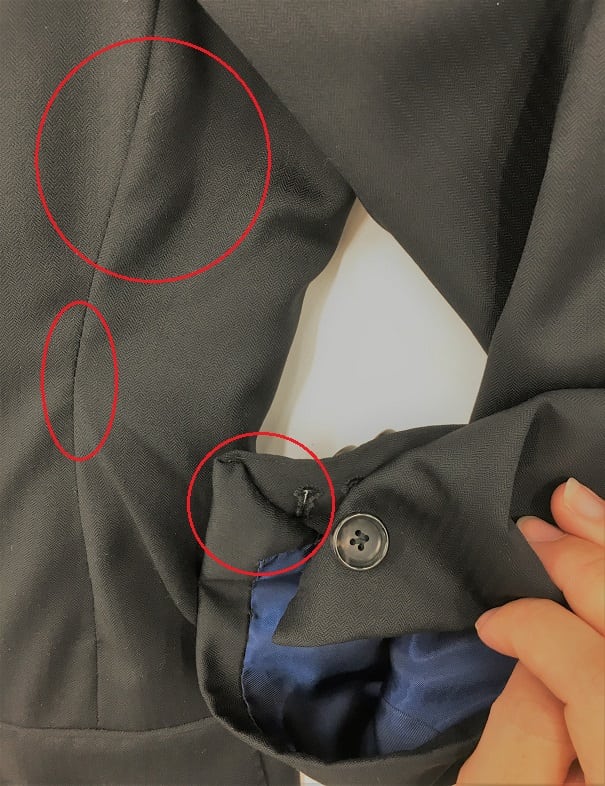
Incorrect
There is a distinctly visible bubble under the armhole, which then turns sharply into the sharply tapered waist. The sleeve cuffs are uneven along the edges, with the overlapping corners one higher than the other. The bottom buttonhole cannot be used because fabric is covering it.
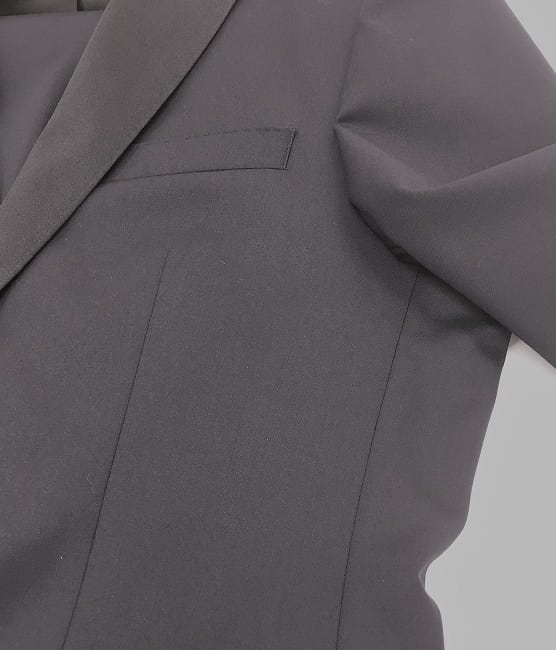
Correct
The seam on the body of the jacket should be tapered gradually to create a smooth, proportional line. The sleeves should have been shortened from the shoulder by an experienced tailor.
4. Adjusting the waist on trousers
Versace trousers bought by a customer from a major department store, had to have the waist let out. They used a franchised tailor through the department store, and the trousers came back riddled with holes. One of the larger holes was visibly darned.
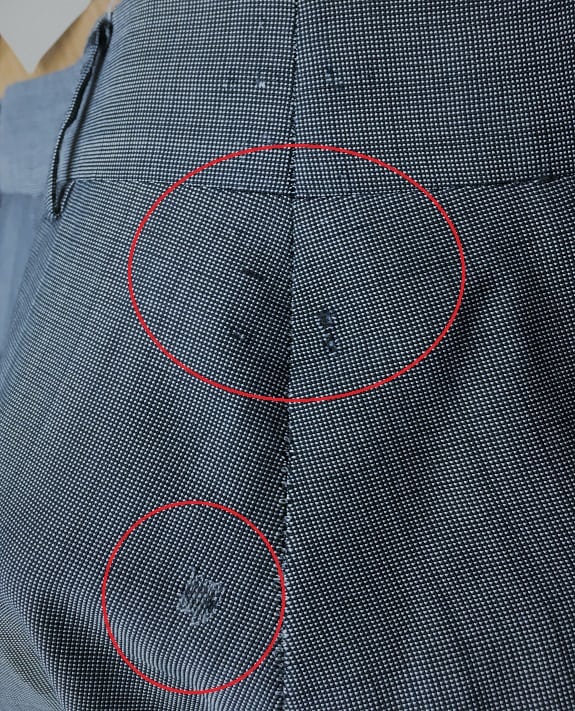
Incorrect
The tailor didn’t exercise enough care when unpicking the seams on the delicate fabric of the trousers, causing multiple holes to appear.
Correct
When increasing the size on a garment, always take extra caution when unpicking stitching. Sometimes strong factory stitching, combined with delicate fabrics can bruise the fabric, and should not be unpicked. If it looks like the fabric may bruise from manufacturer’s stitching, then put the trousers back to its original size, and give the customer an alternate solution to make the trousers fit.

